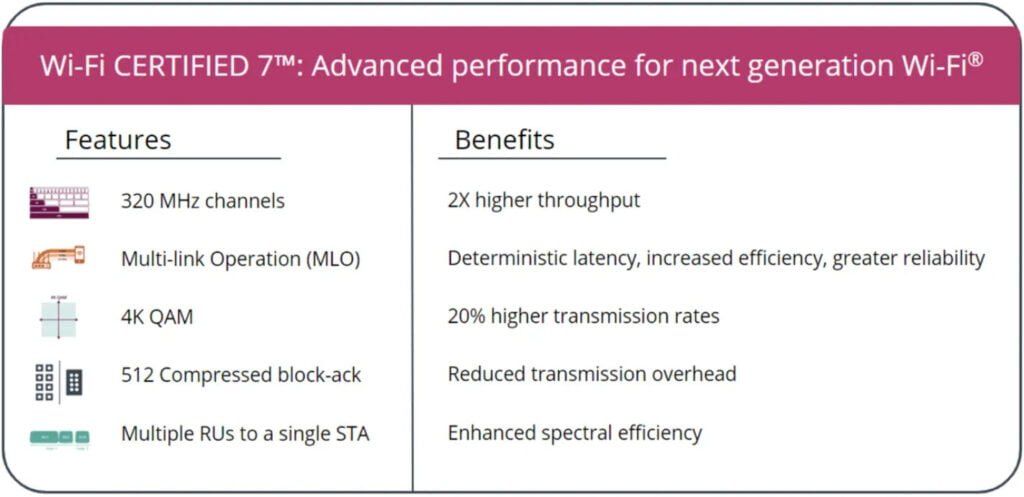The Wi-Fi Alliance has finally announced the official certification of devices that support Wi-Fi 7, marking the arrival of the next generation of wireless home internet. With this certification, Wi-Fi 7 devices are guaranteed to interoperate seamlessly. In the coming years, we can expect to see new tech products such as phones, laptops, and routers equipped with this standard, promising significant speed and efficiency improvements compared to even Wi-Fi 6E.
ALSO READ: Why your Yaka electricity meter is ‘expiring’ this November 2024
According to the Wi-Fi Alliance, Wi-Fi 7 will outperform existing standards in areas such as high-bandwidth streaming and low-latency wireless gaming. This is particularly crucial as virtual reality gains popularity and more people continue to work remotely, relying on platforms like Zoom to connect with colleagues from their kitchen tables or home offices.
Kevin Robinson, the CEO of the Wi-Fi Alliance, emphasized that Wi-Fi 7 is the “first generation built from the ground up” specifically for the 6GHz band. This band offers a faster and broader wireless spectrum, which was first utilized by Wi-Fi 6E devices. It’s worth noting that there are already Wi-Fi 7 routers available on the market from companies like Netgear, TP-Link, and Eero. While some of these routers may not yet be certified by the alliance, it doesn’t mean they won’t work well with Wi-Fi 7 devices in the future. Certification simply allows companies to guarantee compatibility.
In terms of features, Wi-Fi 7 offers double the channel bandwidth compared to the fastest devices on Wi-Fi 5, 6, or 6E standards. This means the potential for wireless downloads at speeds exceeding two gigabits per second. Additionally, Wi-Fi 7 introduces Multi-Link Operation (MLO), which involves wireless link aggregation. This allows for bonded connections across two or three bands (2.4 GHz, 5GHz, and 6GHz), providing users with increased speed and stability. With MLO, users can seamlessly switch between bands without experiencing interruptions or the need to reconnect.

MLO also offers a latency benefit. By having all three bands available simultaneously, there is a higher probability of packets being sent immediately, reducing delays in data transmission. However, it’s important to note that not all routers may support connecting to all three bands simultaneously. Some more affordable routers may only connect to two bands at a time. While this still offers an improvement compared to previous standards, users seeking the full potential of Wi-Fi 7 may need to invest in higher-end routers.
Beyond speed and stability, Wi-Fi 7 also brings enhanced efficiency, throughput, and stability, making it an attractive option for future-proofing your home network. It’s worth mentioning that Wi-Fi 7 devices will be backward-compatible with previous versions of Wi-Fi, ensuring compatibility with older devices. Although older devices won’t directly benefit from the new features of a Wi-Fi 7 router, as new laptops and phones enter the market, they will be able to take advantage of the enhanced capabilities.
In conclusion, Wi-Fi 7 represents a significant advancement in wireless home internet. With its certification by the Wi-Fi Alliance, users can expect seamless interoperability and improved performance for high-bandwidth activities like streaming and gaming. While Wi-Fi 7 routers are already available, it’s important to consider your specific needs and budget when choosing a router that fully supports the Wi-Fi 7 standard. Ultimately, investing in Wi-Fi 7 infrastructure ensures a future-ready network that can accommodate the evolving demands of modern connectivity.

